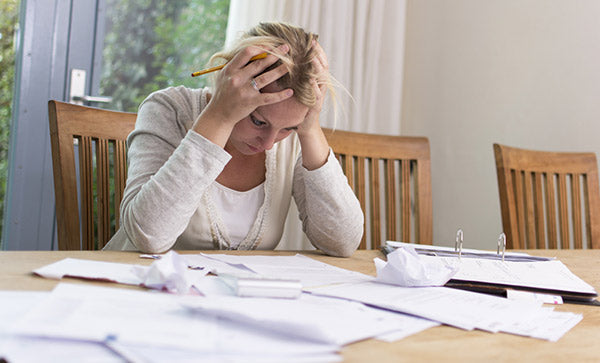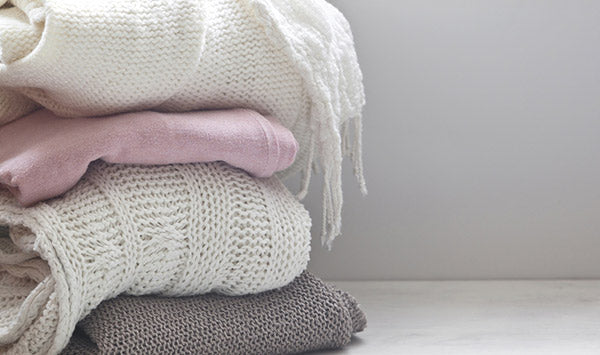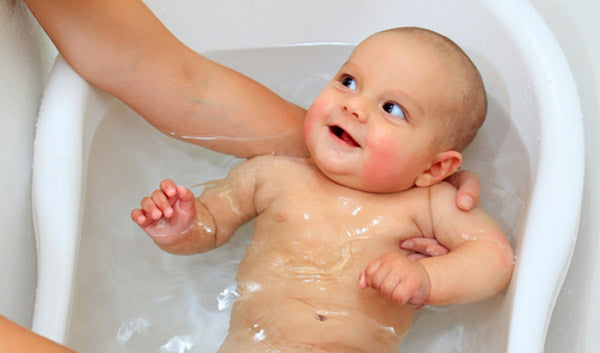There's more than one way to do things when it comes to any aspect of caring for babies, and bathing is no exception. That includes when, how and how often to bathe them.
I tend to bath babies around their evening feed. Parents often tell me their baby becomes over-stimulated when given a bath. If that's your experience I suggest looking at how long they have been up during the current wake cycle and also what is happening, i.e the length of time it takes to undress, to bath, to dry and to dress a baby. If it's longer than they'd normally be awake then I suggest making the wake time shorter and taking less time to bath the baby.
Pre-bath
When your baby wakes, offer a full feed. Arrange your baby's clothes in the order in which they will be put on. For example, bottom of the pile should be the outer clothes, next the nappy, and on top the vest. Lay out a towel and any other bathing products you need. Place your baby on the floor to kick while running the bath. I would take their nappy off for some ‘nappy free' time. The room needs to be warm - not draughty or too hot.
Products I recommend for bathing a baby
- Olive 0il
- Mild shampoo with no paraffin or sulphates
- Mild body soap (optional) - again, I recommend products without paraffin or sulphates
Running the bath
The temperature of the water can vary to suit each baby, however it should not be extreme - neither lukewarm nor scalding hot, so as not to burn them. Around 37 degrees celsius is ideal. If you don't have a bath thermometer, a great way to test the temperature is with your elbow rather than your hand, and the water should feel neither hot nor cold.
Families have different preferences when it comes to the depth of the water, but I always suggest around two to three inches (5 to 7.5 cm). Remember, as the bath is shallow, the water will cool very quickly. I tend to add olive oil to the bath to help with any dry skin. Just drizzle a small amount into the water.
Eyes and face
For newborns I tend to wash their face before putting them in the bath. Start by using cotton wool squares for the eyes (a separate square for each eye) and a face cloth for the face. I wet these under running warm water and then wash the eyes first, wiping from their inner eye (nose side) to the outer eye. Then I wash their whole face with a soft cloth or small muslin square. I dry their eyes and face before putting them in the bathtub.
Putting your baby into the bath
With one arm holding your baby under the back of their neck (i.e. their neck rests on your inner wrist) and grasping their shoulder, your other hand under their bottom, lower your baby into the bath. Your hand touches the water first so it's a double check to ensure the water is at the right temperature.
If bathing in a normal bathtub, once you have placed your baby in the water, you can let them free float as long as the water is not too deep. This gives you both hands free to wash your baby. If your baby does not like the bath, then place a damp face cloth over their tummy to calm them down. Using a sponge or cloth, wet the hair thoroughly. Use a very small amount of shampoo (do not squirt this directly onto his or her hair/scalp) and using your fingers, lightly scrub the scalp, especially over the fontanelle area. I find that when you squirt the shampoo directly onto their scalp, sometimes it doesn't get washed off probably and that can contribute to skin issues.
Next rinse their hair well, again using a sponge or cloth ensuring that you are rinsing their scalp as well as their hair. I tend to only wash under the neck, armpits and bottom. Babies do not get dirty; bathing is just to freshen them up. If using body soap, use sparingly and once again, only under the neck, armpits and bottom.
Turn your baby onto their tummy and in doing this support their head by cupping their chin in your hand. This position enables you to wash the back crease of their bottom. Remove your baby from the bath and place them on the towel. Wrap them in the towel and carry them to wherever you are going to dry and dress your baby.
Drying
You can firmly rub their hair dry, ensuring that you are drying their scalp as well as their hair. Dry behind their ears, making sure that you get right into the crease and that you are pat drying the fold between the scalp and ear.
Also pat your baby's skin dry without rubbing. Dry under their neck and armpits, making sure that you get right into their creases and dry the centre and not just the outside parts of these creases. If these creases are left moist, a fungal infection can occur.
Turn your baby over onto their tummy to dry the back of their neck, back crease of bottom and back of their knee creases. Dry the palms of their hands and check between fingers and toes for fluff. If you find the towel is too thick or difficult to get into all the creases, especially the neck ones, then use a dry muslin cloth.
Dressing
I like to dress the chest first, which is sometimes a little tricky, but as long as you move quickly you can get the vest and nappy on before they have a chance to wee. This is where laying out the clothes in order comes in handy as you start with the vest, followed by the nappy and finish with their remaining clothes.
How often should you bath your baby?
This is optional, however I like to incorporate it into a baby's daily routine. I do it every evening around the 5 to 6pm feed. It is not bathing a baby daily that can lead to problems with their skin, it is the length of time that you keep them in the bath. While your baby may like lying in the water, it should take longer to undress and dry and dress them than the time spent washing them.
Dorothy Waide is a Karitane nurse and a leading sleep consultant who has almost 30 years' baby nursing and sleep-settling experience in homes in New Zealand and abroad. Her consultancy BabyHelp is dedicated to teaching new mums everyday parenting skills and ‘mothercraft' - find it on Facebook here.
For more baby care advice and resources, visit the ecostore Mother and Baby website.
Read more

Amid increasingly busy, stressful lives - with an expectation we'll always be connected and available - Kathleen Wills' new book seems a timely guide for many kiwis. Kathleen is an Auckland integr...

During colder months we tend to pull our woolen garments out of the wardrobe, so it's a useful time to have information close at hand about washing these items. Make sure you follow the clothing m...






